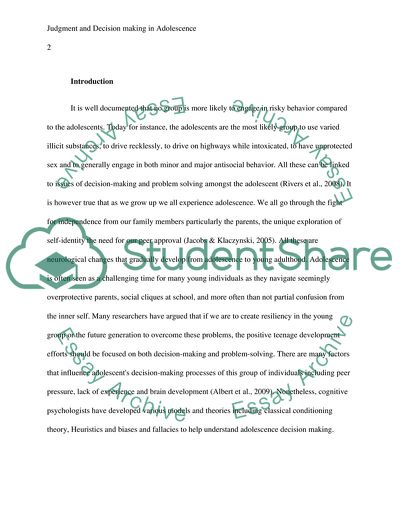Cite this document
(Judgement and Decision Making in Adolescense Coursework Example | Topics and Well Written Essays - 2000 words, n.d.)
Judgement and Decision Making in Adolescense Coursework Example | Topics and Well Written Essays - 2000 words. https://studentshare.org/psychology/1868708-judgement-and-decision-making-in-adolescense
Judgement and Decision Making in Adolescense Coursework Example | Topics and Well Written Essays - 2000 words. https://studentshare.org/psychology/1868708-judgement-and-decision-making-in-adolescense
(Judgement and Decision Making in Adolescense Coursework Example | Topics and Well Written Essays - 2000 Words)
Judgement and Decision Making in Adolescense Coursework Example | Topics and Well Written Essays - 2000 Words. https://studentshare.org/psychology/1868708-judgement-and-decision-making-in-adolescense.
Judgement and Decision Making in Adolescense Coursework Example | Topics and Well Written Essays - 2000 Words. https://studentshare.org/psychology/1868708-judgement-and-decision-making-in-adolescense.
“Judgement and Decision Making in Adolescense Coursework Example | Topics and Well Written Essays - 2000 Words”. https://studentshare.org/psychology/1868708-judgement-and-decision-making-in-adolescense.


